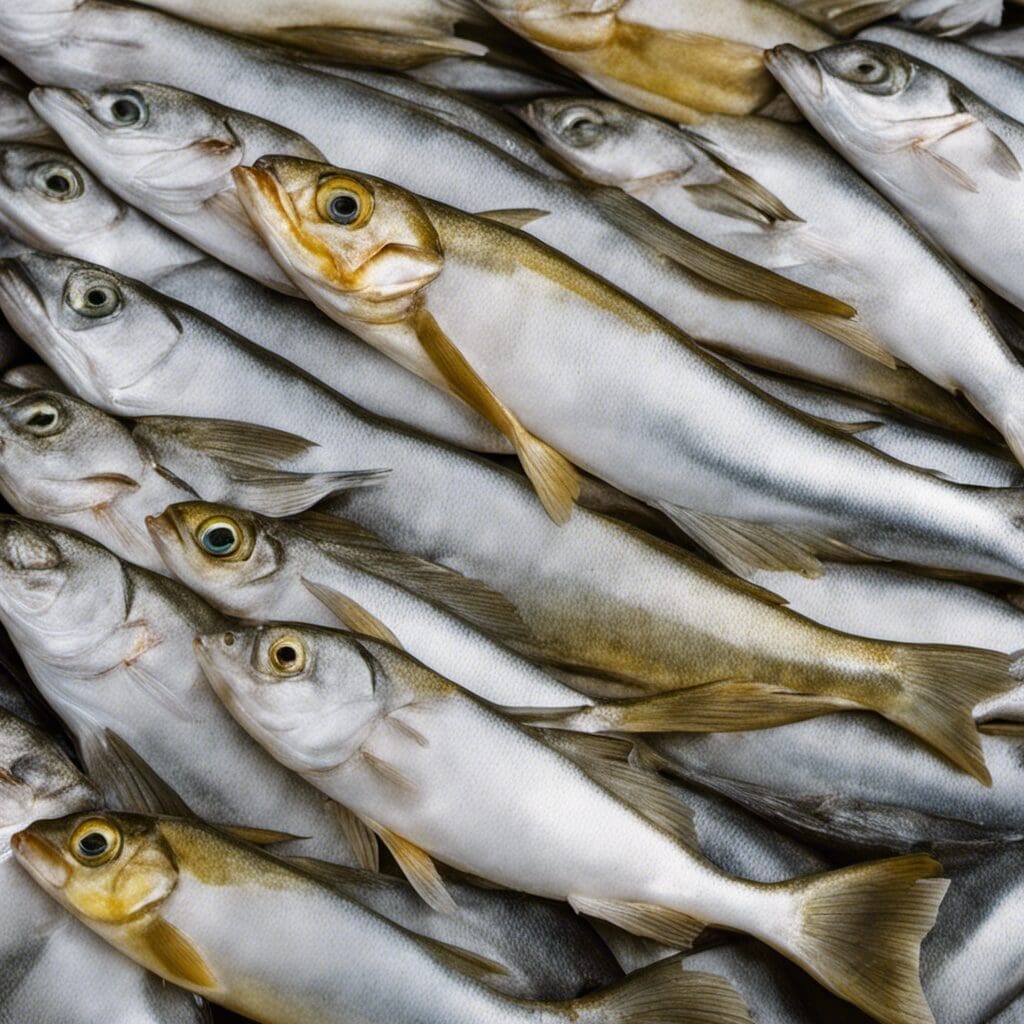The Whiting, officially known as “Merlangius merlangus”, is a popular fish from the Gadidae family.
Conservation Status
The Whiting is currently listed as a species of ’Least Concern’ by global conservation organizations, indicating that it’s currently not under major threat. Conservation efforts include regulations on fishing and habitat conservation initiatives.
Statistics
The Whiting offers intriguing statistics that set it apart in the marine world:
| Statistics | Average | Range |
|---|---|---|
| Length | 30 cm | 20-70 cm |
| Weight | 1 kg | 0.5-3 kg |
| Life Span | 10 years |
Distribution
Whiting are commonly found in the Northeast Atlantic, from the Barents Sea and Icelandic waters to the Bay of Biscay. They tend to migrate towards colder waters during the summer months.
Habitats
The Whiting prefers saltwater habitats, often ranging between depths of 30 to 100 meters. They are tolerant of a wide range of temperatures.
When and Where to See
Whiting are most commonly spotted during the late summer and autumn months, particularly at night.
Best Fishing Locations
Top locations for Whiting fishing are:
- North Sea, United Kingdom
- Barents Sea, Norway
- Irish Sea, Ireland
- Bay of Biscay, France
- Mediterranean Sea, various regions
A good tip for locating Whiting is to seek out sandy or muddy seabed habitats.
How to Catch
Preferred baits for Whiting include squid and mackerel strips. Popular techniques include drift fishing and bottom fishing; winter is the best season for Whiting fishing.
Identification Guide
Physically, the Whiting displays a silver underbody with brown or greenish back and clear longitudinal lines. They can easily be mixed up with haddock, but their mouth is larger and they have a single barbel.
Culinary
Whiting is valued for its delicate, sweet flavor and lean, firm flesh. It’s low in fat and a good source of protein. Popular recipes include battered and fried Whiting or grilled Whiting with lemon and herbs.
Additional Information
Whiting are carnivorous, mainly feeding on small fish and invertebrates. Predators include larger fish species and sea birds. Historically, Whiting has been a staple food source in many coastal communities.
References and Further Reading
For more information and further reading on Whiting, consider the following sources:
- Froese, R. and D. Pauly. Eds. (2019). FishBase. World Wide Web electronic publication. www.fishbase.se
- Marine Conservation Society (2018). Good Fish Guide. www.mcsuk.org

